
Was Carl Jung a Pseudoscientist?
“The world today hangs by a thin thread, and that thread is the psyche of man.” – C.G. Jung
This trial will be an effort in intellectual history and retrospective assessment, not a literal legal proceeding. But it will draw on the judicial spirit of weighting evidence, calling expert witnesses, and rendering an impartial verdict. In that sense, it will be a trial in the court of informed opinion, one that will ask: How do Jung’s legacy and the claims of analytical psychology stand up to scrutiny in light of 21st century knowledge?
To answer that question, we will need to consider multiple ways of knowing and lenses of inquiry. Jung himself was notoriously skeptical of narrow empiricism and the pretensions of scientific objectivity, especially when it came to studying the depths of the human psyche. He tended to privilege first-person experience, intuitive pattern recognition, and phenomenology over experimental methods and third-person observation. For Jung, the psyche was not a passive object of investigation but an active, creative agent in the process of knowledge production.
Jung’s emphasis on subjective experience and the participation of the knower in the known has often been used to dismiss his psychology as unscientific. But it can also be seen as an early articulation of the post-positivist insight that all knowledge is shaped by the standpoint and methods of the inquirer, and that this is especially true in the human sciences, where the object of study is also a subject in its own right. Jung’s reflexive approach, in which he sought to observe his own psychic processes while also participating in them, was an attempt to develop a kind of meta-cognitive capacity, one that could hold the tension between engagement and detachment, empathy and analysis.
This approach, which Jung called “circumambulation,” was not without its pitfalls. Jung’s self-experimentation sometimes led him to universalize his own idiosyncratic experiences, and his fascination with esoteric correspondences could slide into a kind of baroque associationism. But at its best, the Jungian method of disciplined introspection and comparative amplification yielded insights into the deeper layers of the psyche that anticipated later developments in humanistic, transpersonal, and integral psychology.[4]
To assess Jung’s legacy, then, we will need to broaden our notions of evidence and consider multiple ways of knowing, from the empirical to the hermeneutical to the phenomenological. We will examine the latest research in neuroscience, cognitive science, and developmental psychology to see how well Jung’s theories hold up in light of contemporary findings. But we will also consider the evidence of symbol, myth, and metaphor, the expressive and aesthetic dimensions of psychic life that were so central to Jung’s vision.
This multidisciplinary, polymethodic approach seems fitting for the evaluation of a figure who ranged so widely in his interests and drew on so many different streams of thought, from Gnosticism to quantum physics to the I Ching. The challenge will be to weave these disparate strands into a coherent tapestry, one that does justice to the complexity and multivalence of Jung’s thought while also submitting it to critical scrutiny. Only by honoring both the daylight and the night vision of the psyche, to use one of Jung’s favorite metaphors, can we hope to render a balanced and illuminating verdict on his life and work.
“There is always one truth more than you bargained for.” – James Hillman
Case 1: Typology and the MBTI
One of Jung’s most influential and enduring contributions to psychology was his theory of psychological types. First articulated in 1921 in the book of the same name, Jung’s typology posited that individuals tend to have innate preferences for certain modes of perceiving and judging, which shape their overall personality and cognitive style. Jung identified two basic attitudes or orientations of energy – introversion and extraversion – and four functions or modes of apprehending reality: sensation, intuition, thinking, and feeling. Each function could be directed in an introverted or extraverted way, yielding eight basic personality types.
Jung arrived at this model through a combination of empirical observation, introspection, and theoretical deduction. He noticed that people tended to fall into certain broad categories in terms of their habitual way of taking in information and making decisions. Some were oriented primarily to the outer world of people and things (extraverts), while others were more attuned to their inner world of thoughts and feelings (introverts). Some focused mainly on concrete sensory details (sensation types), while others naturally looked for abstract patterns and possibilities (intuitive types). Some made decisions based on objective logic and analysis (thinking types), while others relied more on subjective values and the weighing of human factors (feeling types).
Jung saw these preferences as innate predispositions rather than rigid categories. He acknowledged that everyone has access to all four functions, but tends to develop one or two of them more fully, while the others remain relatively unconscious and undifferentiated. Jung also emphasized that type preferences describe people as they are naturally, not as they should be. No type is inherently better than another, although certain types may be better suited for certain tasks and contexts. The goal of personality development, in Jung’s view, was not to conform to some ideal type, but to become more fully one’s unique self through the individuation process.
Jung’s model of psychological types proved to be one of his most practically applicable and commercially successful ideas. It was further developed by Katharine Cook Briggs and her daughter Isabel Briggs Myers into the Myers-Briggs Type Indicator (MBTI), which operationalized Jung’s theory into a questionnaire format suitable for assessing type preferences in individuals and groups. First published in 1943, the MBTI would go on to become the most widely used personality inventory in the world, with over 2 million copies administered each year.
While the MBTI has been criticized for its lack of predictive validity and the dubious psychometric properties of its dichotomous scoring method, the underlying Jungian constructs it measures have fared better in light of subsequent research. Multiple factor analytic studies have found support for the basic dimensions of introversion-extraversion and sensing-intuiting as important aspects of personality that are relatively stable across cultures. The thinking-feeling dimension has proven more psychometrically problematic, but conceptually anticipated later distinctions between masculine and feminine cognitive styles and between left-brain and right-brain information processing.
More recently, studies using quantitative electroencephalography (qEEG) have lent neural plausibility to Jung’s model of cognitive functions. A series of experiments in the late 1990s found significant differences in brain wave activity between individuals with preferences for different Jungian types. Sensation types, for example, showed greater beta wave activity in posterior regions associated with sensory processing, while intuitive types had more alpha wave activity in anterior regions linked to abstract reasoning. Similar correlations were found between EEG signatures and preferences on the other Jungian dimensions of introversion-extraversion and thinking-feeling.
The qEEG validation of Jungian types is noteworthy because it uses methods that were unavailable in Jung’s own lifetime to test the neurophysiological basis of the patterns he discerned phenomenologically. Unlike the more structurally-oriented neuroimaging techniques like MRI and CT, qEEG offers a functional window into the real-time electrical activity of the brain that aligns well conceptually with Jung’s energic model of the psyche. The finding that individuals with different type preferences exhibit measurably different brain wave configurations lends credence to Jung’s claim that types are not just arbitrary categories but reflect underlying differences in the “psychic metabolism.”
Critics have sometimes dismissed Jung’s typology as a simplistic pigeonholing of individuals into static categories. But placed in the context of Jung’s overall theory of personality, types can be seen as heuristic lenses for bringing into focus different layers and potentials of the psyche. For Jung, type development was not about identifying and conforming to a static essence, but about cultivating the neglected functions and balancing one-sided tendencies in order to become a more complete and individuated self. Paradoxically, the path to wholeness led through an embrace of the partial, a confrontation with one’s characteristic slant on reality.
Jung’s perspectivalist approach to personality also harmonizes with more recent notions of identity as multiple, intersecting and contextual, as developed by feminists and critical theorists. These postmodern views recognize that we contain multitudes – that our sense of self is shaped by the interplay of various group memberships and social locations based on gender, ethnicity, class, sexual orientation and other variables. Any attempt to reduce identity to a single, fixed essence is seen as fragmenting and oppressive. Jung’s appreciation for the prismatic nature of the psyche, his understanding that personality is not a static unity but a dynamic multiplicity, seems prescient in our pluralistic and hyphenated age.
In the final assessment, Jung’s theory of psychological types must be judged a qualified success. As a scientific classification system, it has proven too fuzzy and open-textured to achieve the status of lawlike generalizations. But as a framework for self-understanding and the exploration of human differences, it continues to resonate. The survival of typology in popular discourse – from workshops to dating profiles to management seminars – attests to the enduring utility of Jung’s scheme for embracing our unique slant on the world without being imprisoned by it. By mapping the multidimensionality of the psyche, Jungian types foster an appreciation for both the diversity and the underlying unity of human nature.
Verdict: Partially Validated Jung’s typology, while not achieving the status of scientific law, offers an enduring framework for exploring personality diversity that is supported by some empirical evidence and remains useful for self-understanding and relational insight.
Verdict: Partially Validated
“No tree, it is said, can grow to heaven unless its roots reach down to hell.” – Carl Jung
Case 2: Complexes and the Dissociability of the Psyche
Another of Jung’s key contributions to depth psychology was his model of the psyche as a multiplicity of autonomous sub-personalities or complexes. Drawing on the findings of Pierre Janet and others on dissociative phenomena, Jung proposed that the psyche is not a unitary whole but contains numerous “splinter psyches” that can operate independently of the ego.
For Jung, complexes were the basic building blocks of the psyche. Rooted in early experiences of trauma, conflict or developmental challenge, complexes form emotionally-charged clusters of memories and images that tend to repeat certain patterns of thought, feeling and behavior. When activated by an external trigger, complexes can take possession of the conscious personality, temporarily overriding the ego and leading to uncharacteristic or irrational behavior.
Jung’s model of complexes was based on experimental evidence as well as clinical observation. Using a primitive version of the word association test developed by Francis Galton and Wilhelm Wundt, Jung timed subjects’ responses to a list of stimulus words and measured changes in their galvanic skin response, breathing rate and other physiological parameters. He found that certain words reliably elicited delayed reaction times, idiosyncratic associations, and signs of emotional agitation, suggesting the presence of feeling-toned complexes operating autonomously in the psyche.
Jung’s theory of complexes anticipated and was supported by later research on dissociation and personality fragmentation. The idea that identity is not a monolith but contains multiple self-states, each with its own set of memories, traits and behavioral patterns, has been confirmed by studies of dissociative identity disorder (formerly called multiple personality disorder) and the effects of trauma and abuse. Neuroimaging research has also lent credence to Jung’s model of a modular psyche composed of discrete functional networks that can operate relatively independently of each other.
Jung’s complex theory reflects his deep appreciation for the dissociability of the mind and the multiplicity of selfhood. For Jung, the task of individuation was not to eliminate or integrate the complexes, which he saw as vital sources of psychic energy, but to withdraw the projections placed on them and relate to them as “real but not literal” presences in the inner world. Engaging the complexes in a kind of internal “parliament of selves” was a key part of Jung’s method of active imagination, a form of disciplined spontaneity that sought to midwife new levels of self-organization out of the “chaotic wholeness” of the unconscious.
Jung’s pluralistic understanding of the psyche, with its population of sub-personalities in shifting alliances and oppositions, anticipated postmodern notions of the self as multiple, distributed and dialogical. Social psychologists like Kenneth Gergen and Hubert Hermans have described identity as a multi-voiced “conversation of selves” in which different I-positions are negotiated in interaction with real and imagined others. Jungian analysts like Andrew Samuels have explored Jung’s complex theory as a framework for understanding political and cultural conflict, arguing that competing complexes in the collective psyche can seize nations and groups in much the same way they possess individuals.
In the final analysis, the theory of complexes must be considered one of Jung’s most original and substantive contributions to our understanding of the psyche. Grounded in experimental evidence and supported by subsequent research on dissociation and the modular brain, Jung’s model of a multiple, decentered self has proven prescient and generative. By mapping the polycentric nature of consciousness and the “community of selves” that constitutes personality, Jung offered a framework for exploring the full spectrum of human possibility, from the heights of creative achievement to the depths of psychopathology. At the same time, he recognized the need for a dialogical ego capable of negotiating among the competing claims of the complexes without being overwhelmed by them – an insight that seems especially relevant in our era of identity politics and culture wars.
Verdict: Innocent
Substantially validated by subsequent research on dissociation, trauma, and the modular organization of the brain-mind, Jung’s theory of complexes offers an enduring framework for understanding the multiplicity of the psyche.
“The decisive question for man is: Is he related to something infinite or not?” – Carl Jung
Case 3: Archetypes and the Collective Unconscious
Perhaps the most speculative as well as influential dimension of Jung’s thought was his theory of archetypes and the collective unconscious. Drawing on his comparative research into mythology, religion and the creative arts, Jung proposed that the human psyche contains a universal layer of phylogenetically inherited “primordial images” that he called archetypes. These archetypes, Jung argued, form the basic building blocks of mythic experience, showing up across cultures and epochs in symbols like the Great Mother, the Wise Old Man, the Divine Child and the Trickster.
For Jung, archetypes were the psychological correlates of biological instincts – innate dispositions of psychic energy that evolved to help humans navigate universal existential challenges and transitions. Just as there are bodily instincts for survival, sexuality and group bonding, Jung claimed there are psychic instincts for meaning-making, identity formation and the encounter with the numinous. Archetypes are the innate releasing mechanisms for these psychological imperatives, providing a repertoire of affectively-charged images through which the deepest truths of the human condition can be experienced and expressed.
Jung’s main evidence for the existence of archetypes was the cross-cultural recurrence of certain mythological motifs and symbolic images, such as the world tree, the mandala, the hero’s journey and the sacred marriage of god and goddess. Such parallels, Jung argued, could not be explained by cultural diffusion but pointed to an innate substrate of shared meanings – a “collective unconscious” that was the common property of humanity.
Jung’s theory of archetypes has remained his most controversial as well as influential idea. Critics argue that Jung’s comparative method was unsystematic and projective, reading timeless meanings into cultural materials that were shaped by specific historical contexts and ideological agendas. Anthropologists have challenged the very notion of a collective unconscious, arguing that even seemingly universal symbols and myths show tremendous local variation and are always embedded in particular social and power relations. Even within Jungian circles, there has been much debate about whether archetypes are best conceptualized as inherited psychic structures or as emergent properties of self-organizing systems.
In recent years, however, there have been some intriguing attempts to ground Jungian archetypes in contemporary evolutionary and neurobiological paradigms. The psychiatrist Anthony Stevens, for example, has argued that archetypes can be understood as innate “action patterns” akin to fixed action patterns in ethology – stereotyped behavioral programs that are triggered by environmental releasers and serve adaptive functions. Drawing on attachment theory, developmental psychology and neuroscience, Stevens posits archetypes as “innate initiating factors” that organize the brain-mind around universal existential tasks such as bonding, separation, exploration and identity formation.
Other researchers have looked for the neural correlates of archetypal experiences using brain imagining techniques. A study by Rosen et al. (2001) found that self-reported experiences of archetypal symbols during Jungian sandplay therapy were associated with increased activity in right hemisphere brain regions linked to emotionality, imagery and body awareness. The authors suggest that archetypal symbols may evoke primal emotional-motivational networks in the brain that are common to all humans but are clothed in different cultural garb.
Still others have proposed that archetypes can be modeled as attractors in complex dynamical systems operating at multiple levels, from the biological to the cultural. In this view, symbolic images like the mandala or the world tree are emergent patterns that arise from the recursive feedback of individual minds interacting with cultural symbol systems over evolutionary and historical time scales. While still anchored in innate biological and psychological predispositions, archetypes in this model are seen as fluid and context-sensitive, with the potential for creative variation as well as conservative transmission.
Despite these ongoing efforts to update and operationalize Jung’s theory, the ontological status of archetypes remains unproven. As scientific constructs, they are likely too fuzzy and open-ended to achieve the precision demanded by modern psychology. Nor have the neural correlates of archetypal imagery been mapped with sufficient specificity to confirm their universality or innateness. The evidence for phylogenetic inheritance of psychic contents remains largely circumstantial and open to alternative explanations.
A final verdict on the theory of archetypes awaits more definitive research.
At the same time, it’s important to recognize the enduring cultural and psychological appeal of Jung’s theory of archetypes. Even if their scientific status remains unproven, archetypes continue to resonate as explanatory frameworks and hermeneutic lenses for interpreting symbolic experience. From dream interpretation to movie criticism to brand marketing, the Jungian language of primordial images and elemental forces remains a potent tool for illuminating the depths of the creative imagination.
Perhaps the real value of archetypes lies not in their validity as scientific constructs but in their generativity as psychological metaphors. By linking the individual psyche to the larger recurring dramas of human existence, archetypes offer a framework for locating personal experience within a transpersonal horizon of meaning. They serve as intuitive bridges between mind and nature, self and world, psyche and cosmos. At their best, archetypes can function as “categories of imagination” that open us to numinous dimensions of reality and expand our sense of what it means to be human.
In this sense, Jung’s theory of archetypes, like other “big ideas” in psychology such as Freud’s Oedipus complex or Maslow’s hierarchy of needs, is perhaps best approached as a kind of generative fiction or psychological myth. While not literally true in any simplistic sense, it nonetheless captures something profound and enduring about the human condition that continues to animate our dreams, stories and reflections. By engaging with archetypes as “true but not literal” realities, we gain access to a mode of symbolic experiencing and meaning-making that is the very essence of the poetic basis of mind.
Verdict: Unproven but Generative
While the scientific status of archetypes as innate psychic structures remains unconfirmed, Jung’s theory continues to have generative value as a framework for interpreting symbolic experience and exploring the creative imagination. Archetypes are perhaps best approached as psychological metaphors that offer intuitive bridges between personal and transpersonal dimensions of meaning.
Case 4: Jungian Archetypes in the Mal’ta-Buret’ Culture
The discovery of the 24,000-year-old Mal’ta-Buret‘ archaeological site in Siberia has opened up an intriguing window into the symbolic universe of an Upper Paleolithic culture. Among the most striking finds at the site are a series of elaborate Venus figurines depicting female forms with exaggerated sexual features. These “Venus of Mal’ta” statuettes, as they have come to be known, bear a remarkable resemblance to similar carvings from European sites like Willendorf and Laussel, suggesting the existence of a widely shared “goddess religion” or fertility cult in the Paleolithic.
From a Jungian perspective, the Mal’ta Venuses can be viewed as vivid expressions of the mother archetype – the primordial image of the Great Mother as source and sustainer of life. With their pendulous breasts, swollen bellies and pronounced labia, these ancient “body goddesses” seem to celebrate the mysteries of female procreativity and embody the numinous powers of birth, death and regeneration. The fact that they are often found within or near graves and burial mounds only underscores their association with the eternal round of existence.
As Erich Neumann argued in his landmark work “The Great Mother” (1955), the mother archetype underwent a complex evolution from its initial appearance in the Paleolithic era to its later expression in the high civilizations of antiquity and beyond. For Neumann, the Venus figurines of Mal’ta and other prehistoric sites represented the “elementary character” of the feminine archetype in its most pristine and undifferentiated form – a form he linked to humanity’s early participation mystique with the natural world and its cycles of organic transformation.
In these ancient effigies of the goddess, Neumann discerned the outlines of a “matriarchal consciousness” in which the entire cosmos was experienced as a “self-generating womb” or “ever-fruitful earth.” The Great Mother in her primordial guise was the alpha and omega of existence, giving birth to the world and receiving it back into herself in a ceaseless round of emanation and reabsorption. Neumann interpreted the fecund, animalian features of the Mal’ta Venuses – their egg-shaped buttocks, swollen vulvas and cowrie-shell eyes – as expressions of this archaic “vegetation consciousness” in which the mysteries of life, death and sexuality were as yet undifferentiated.
For Neumann, the Paleolithic Venuses represented the “ouroboric” stage of matriarchal consciousness, associated with the symbol of the snake biting its own tail. In this view, the ouroboros represents the self-contained, autochthonous powers of the Great Mother as the ground and horizon of all being. The fused, mandorla-like forms of the Mal’ta figurines, in which trunk and limbs flow together in a continuous ovoid shape, can be seen as expressions of this primal uroboric union of offspring and matrix, microcosm and macrocosm, death and rebirth.
From a somewhat different angle, Jungian analyst and scholar Edward Edinger has suggested that the Mal’ta-Buret’ site and its iconography may represent an important transition point in the evolution of human consciousness. In his 1992 book “Ego and Archetype,” Edinger proposes that the elaborate burials and ceremonial figurines found at Mal’ta reflect the emergence of a nascent form of self-awareness and death-consciousness unique to Homo sapiens.
Edinger interprets the numinous grave goods at Mal’ta, including the ubiquitous Venus figurines and various animal carvings, as evidence of a growing capacity for symbolic thought and an attempt to mediate the awesome powers of the unconscious. By surrounding the dead with magically-charged totems and images, Edinger argues, the Mal’ta-Buret’ people were engaging in a kind of proto-religious activity aimed at warding off the threat of non-being and establishing a bridge between the visible world of the living and the invisible world of the spirits.
For Edinger, this ritualization of the boundary between life and death adumbrates the “ego-Self axis” – the archetypal connection between conscious identity and the larger transpersonal matrix out of which it arises and into which it must return. The individual ego, in this view, is a novel psychic structure that emerges out of the undifferentiated “participation mystique” of the primitive psyche, but remains forever dependent on the archetypal Self as its transcendental ground. The burial customs at Mal’ta, with their careful arrangement of bodily remains and their inclusion of symbolically-charged grave goods, can be seen as an expression of this dawning awareness of the Self as the eternal “other” to the mortal ego.
What Edinger calls the “ego-Self axis” is homologous to what other Jungian thinkers have described as the “individuation drive” – the innate psychological need for a sense of meaning, wholeness and self-realization. This drive, which Jung saw as the ultimate goal of human development, is not a matter of self-aggrandizement or ego-inflation but rather a process of dialectical engagement between the conscious personality and the larger archetypal matrix of the objective psyche. Individuation involves a progressive differentiation of the ego from the unconscious together with a reintegration of the two poles at a higher level of psychological awareness.
The Mal’ta-Buret’ culture, with its rich assemblage of artistic and spiritual remains, provides a tantalizing glimpse into the symbolic universe of our Upper Paleolithic ancestors and the role that archetypal images and rituals may have played in the evolution of human self-consciousness. From a Jungian perspective, the site can be seen as a kind of alchemical vessel or “womb of rebirth” in which the archaic powers of the collective unconscious were being churned and transformed through the medium of religious symbolism and ceremonial enactment.
At the same time, it’s important not to romanticize or project too much into the gaps in the archaeological record. We may never know for sure what the Mal’ta Venus figurines and other artifacts meant to the people who created them or what role they played in their lives. What we can say is that they evoke universal themes of birth, death, sexuality and transformation that continue to resonate in the modern psyche and that find expression in the enduring symbolic motifs of myth, religion and art.
From a Jungian perspective, then, the real significance of Mal’ta may lie not so much in what it tells us about a particular prehistoric culture but in what it reveals about the deeper archetypal structure of the human imagination. By confronting us with images that both fascinate and disturb, that seem at once alien and strangely familiar, the Mal’ta-Buret’ site challenges us to enlarge our understanding of what it means to be human and to embrace the ongoing mystery of our creative dialogue with the unconscious.
Verdict: Thought-provoking parallels While the precise meaning and function of the Mal’ta-Buret’ goddess figurines and burial practices may never be fully known, they evoke archetypal themes of the feminine, the numinous and the transpersonal that are central to Jungian psychology. Seen through the lens of thinkers like Neumann and Edinger, the Mal’ta finds can be interpreted as expressions of an evolving human consciousness, grappling with the mysteries of birth, death, and regeneration and forging a creative dialogue between the ego and the archetypal powers of the collective unconscious.
“I am not what happened to me, I am what I choose to become.” – C.G. Jung[63]
Case 5: Jung’s Influence on Joseph Campbell and Modern Myth Studies
One of Jung’s most far-reaching but often overlooked contributions to modern thought was his influence on the comparative mythologist Joseph Campbell, who helped popularize key Jungian ideas and apply them to the study of world mythology and the interpretation of religious symbols. Campbell was introduced to Jung’s work in the late 1920s while studying medieval literature at the University of Paris, where he also immersed himself in the emerging fields of anthropology, ethnology and psychoanalysis.
In Jung’s concept of archetypes, Campbell found a powerful explanatory framework for the cross-cultural parallels he had long intuited in his wide-ranging studies of myth, folklore and religion. Jung’s theory of a “collective unconscious” peopled by primordial images seemed to offer a key to understanding the universality of certain mythic motifs and narrative patterns across time and space. Campbell came to see myth as the “secret opening through which the inexhaustible energies of the cosmos pour into human cultural manifestation,” and he credited Jung with providing a roadmap to this inner world of the psyche.
Campbell’s landmark 1949 book “The Hero With a Thousand Faces” was deeply shaped by Jungian ideas, even as it drew on a wide range of other sources, from Freud and Frazer to Coomaraswamy and Joyce. In this influential work, Campbell distilled the common structural elements of hero myths from around the world into a single “monomyth” or archetypal quest narrative. According to Campbell, the hero’s journey typically involves a series of stages including the call to adventure, the crossing of a threshold into a realm of supernatural wonder, the overcoming of trials and temptations, the winning of a boon or elixir, and the return to the ordinary world with newfound knowledge and power.
For Campbell, this archetypal hero quest was not just a recurring literary device but a symbolic expression of the individuation process that Jung had identified as the central task of human psychospiritual development. The hero, in Campbell’s view, is the one who heeds the call of their deepest nature and sets out on a journey of self-discovery, braving the perils of the unconscious and reintegrating the fragmented parts of their psyche into a new whole. By following the path of individuation symbolized in myth, Campbell believed, modern individuals could reconnect with the archetypal wellsprings of their being and find renewed meaning and purpose in life.
Campbell’s “monomyth” model had a profound influence on the study of literature, film, and popular culture in the second half of the 20th century. It provided a template for analyzing the underlying structure and psychological significance of stories across a wide range of genres and media, from ancient epics to contemporary blockbusters. George Lucas famously credited Campbell’s work with inspiring the “Star Wars” franchise, and countless other filmmakers, novelists, and screenwriters have drawn on the hero’s journey framework in their own creative work.
More broadly, Campbell helped to mainstream Jungian concepts like archetypes, the collective unconscious, and the individuation process, making them part of the lingua franca of late 20th century popular spirituality and self-help discourse. His 1988 television series “The Power of Myth,” filmed in conversation with journalist Bill Moyers, introduced millions of viewers to the idea that mythology is not just a quaint relic of the past but a living symbolic language that speaks to the deepest needs and aspirations of the modern psyche.
At the same time, Campbell’s approach to myth has not been without its critics. Some scholars have accused him of decontextualizing and universalizing culturally specific myths and symbols, glossing over their historical and political dimensions in favor of a kind of “golden bough” of timeless spiritual truths. Others have questioned the empirical basis of Jung’s theory of archetypes and the collective unconscious, arguing that there is little evidence for the existence of inherited psychic structures or universal narrative patterns.
Feminist critics in particular have taken Campbell to task for his androcentric bias and his tendency to romanticize patriarchal quest narratives at the expense of other kinds of stories and perspectives. They point out that the “monomyth” model valorizes a stereotypically masculine ideal of heroic individualism while marginalizing the experiences and values traditionally associated with women, such as nurturing, relationship, and community. Some have proposed alternative models of the heroine’s journey that challenge and subvert the phallocentric assumptions of the Campbellian paradigm.
Despite these critiques, there is no denying the enduring influence of Campbell’s Jungian-inspired approach to myth on modern storytelling and popular culture. By providing a framework for understanding the psychological functions and symbolic meanings of mythic narratives, Campbell helped to revitalize the study of mythology and reawaken a sense of its relevance for contemporary life. His work has inspired countless artists, writers, and thinkers to explore the archetypal dimensions of their own creative processes and to tap into the transformative power of myth as a tool for personal and collective awakening.
From a Jungian perspective, Campbell’s greatest contribution may have been to remind us of the vital importance of attending to the mythic imagination as a source of meaning, healing, and regeneration in a disenchanted world. By pointing to the enduring significance of archetypal symbols and stories for the human psyche, Campbell challenged the modern tendency to dismiss myth as mere superstition or escapism and invited us to engage with it as a profound expression of our deepest existential and spiritual concerns. In this sense, his work can be seen as a bridge between the timeless wisdom of the ancients and the urgent psychological and moral imperatives of our own age.
Verdict: Highly Influential
While not without its critics, Campbell’s synthesis of Jungian ideas with the cross-cultural study of myth profoundly shaped the way we understand and engage with symbolic narratives in the modern world. By interpreting mythic themes and motifs through the lens of depth psychology, Campbell helped to revitalize the field of comparative mythology and highlight its ongoing relevance for personal and collective transformation.
Case 6: Jungian Concepts in Light of Modern Neuroscience
In recent decades, advances in neuroscience have opened up new avenues for exploring the biological basis of psychological phenomena, from perception and emotion to memory and decision-making. While Jung himself was skeptical of reducing the psyche to the brain, seeing the two as complementary but not identical, some contemporary researchers have sought to bridge the gap between Jungian theory and the findings of modern neuroscience.
One area where Jungian concepts have found intriguing parallels in neuroscientific research is the study of emotion and its role in shaping behavior and decision-making. In the early 1990s, neuroscientist Antonio Damasio put forward his “somatic marker hypothesis,” which proposed that emotional signals in the body, or “somatic markers,” play a key role in guiding our choices and actions, especially in situations of uncertainty or ambiguity. According to Damasio, these somatic markers are acquired through experience and serve as a kind of implicit memory, biasing our behavior toward outcomes that have been associated with positive feelings in the past and away from those that have led to negative outcomes.
Damasio’s model has some striking resonances with Jung’s theory of complexes, which likewise sees emotion as a primary driver of behavior and views the psyche as a complex system of interacting cognitive-affective subsystems. For Jung, complexes are emotionally charged clusters of images and memories that tend to repeat certain patterns of thought and behavior, often outside of conscious awareness or control. Like somatic markers, complexes are shaped by individual experience and serve as implicit guides for navigating the challenges of life.
Another area where Jungian ideas have found unexpected support in neuroscience is the study of the divided brain and the specialization of the cerebral hemispheres. In the 1960s, research on split-brain patients by Nobel laureate Roger Sperry and others revealed that the two hemispheres of the brain have different cognitive styles and capabilities, with the left hemisphere specialized for language, logic, and sequential processing and the right hemisphere more involved in spatial reasoning, pattern recognition, and holistic perception.
These findings have intriguing parallels with Jung’s model of psychological types, which posits that individuals have innate preferences for certain cognitive functions, such as thinking versus feeling and sensing versus intuiting. Jung associated the thinking and sensing functions with the left hemisphere and the feeling and intuiting functions with the right hemisphere, anticipating later research on hemispheric lateralization. He also believed that most individuals tend to rely more heavily on one hemisphere or the other, leading to the different personality types he identified in his typology.
More recently, researchers have used neuroimaging techniques like fMRI and PET to investigate the neural correlates of Jungian concepts like archetypes and the collective unconscious. A 2002 study by Rosen et al., for example, found that self-reported experiences of archetypal symbols during Jungian sandplay therapy were associated with increased activity in right hemisphere regions involved in emotion, imagery, and autobiographical memory retrieval. The authors suggest that archetypal symbols may evoke primal affective-motivational networks in the brain that are common to all humans but are triggered by different cultural stimuli.
Other studies have looked at the neurological basis of complex post-traumatic stress responses, drawing parallels between Jung’s theory of autonomous complexes and the findings of contemporary trauma research. A 2006 study by Lanius et al., for instance, used fMRI to examine the neural correlates of dissociative responses to trauma scripts in subjects with PTSD. They found that dissociative reactions were associated with increased activation of the medial prefrontal cortex and anterior cingulate cortex, areas involved in emotional regulation and self-referential processing, and with decreased activation of the amygdala, hippocampus, and right inferior frontal gyrus, areas involved in threat detection, memory encoding, and language processing.
The authors interpret these findings as evidence for a “dissociative subtype” of PTSD characterized by a detachment from overwhelming emotional states and a failure to integrate traumatic memories into explicit autobiographical narratives. This dissociative response bears a striking resemblance to Jung’s description of how complexes can “split off” from the conscious personality and take on a life of their own, operating autonomously in the psyche.
While these neuroscientific findings are intriguing and offer some tantalizing points of convergence with Jungian theory, it’s important to approach them with caution and not to overstate their implications. The brain is an incredibly complex system, and our understanding of how it gives rise to the subjective experience of consciousness is still in its infancy. Neuroimaging studies can show correlations between brain activity and psychological states, but they cannot prove causation or fully capture the meaning and context of those states.
Moreover, there is a risk of falling into a reductionistic “nothing but” fallacy when trying to map Jungian concepts onto neural substrates. Just because we can identify brain regions or networks that are active during archetypal experiences or dissociative states doesn’t mean that those experiences are reducible to or explained away by those neural correlates. The psyche, as Jung understood it, is an emergent property of the brain-body-environment system as a whole, not a mere epiphenomenon of neural activity.
At the same time, it would be a mistake to dismiss the findings of neuroscience as irrelevant to Jungian psychology or to retreat into a dualistic view that sees the psyche and the brain as wholly separate realms. Jung himself was deeply interested in the scientific study of the mind and sought to ground his theories in empirical observations and experimental data wherever possible. He also recognized the need for psychology to evolve and adapt in light of new discoveries and changing paradigms.
In this spirit, a constructive dialogue between Jungian psychology and modern neuroscience could help to enrich and refine our understanding of the psyche and its biological underpinnings. By bringing the insights of depth psychology into conversation with the findings of contemporary brain research, we may be able to develop a more integrated and nuanced view of the mind-brain relationship, one that honors the complexity and mystery of the psyche while also grounding it in the concrete realities of the body and the world.
Some possible areas for future exploration at the interface of Jungian theory and neuroscience might include:
- The role of implicit memory and emotional conditioning in the formation and activation of complexes, and how these processes are mediated by specific brain systems like the amygdala, hippocampus, and prefrontal cortex.
- The neural basis of archetypal experiences and the ways in which cultural symbols and narratives interact with innate perceptual and affective predispositions to shape the contents of the collective unconscious.
- The relationship between Jungian personality types and patterns of hemispheric lateralization and functional connectivity in the brain, as revealed by techniques like qEEG and fMRI.
- The neuropsychology of dissociation and its role in trauma, attachment disorders, and other forms of psychopathology, and how a Jungian understanding of the fragmented psyche might inform new approaches to treatment and healing.
- The neural correlates of numinous experiences like synchronicity, peak states, and mystical union, and how these might be understood in terms of Jungian concepts like the Self, the transcendent function, and the individuation process.
By pursuing these and other lines of inquiry in a spirit of open-ended exploration and mutual enrichment, Jungian psychology and neuroscience may be able to shed new light on the enduring mysteries of the human mind and its place in the wider web of life.
Verdict: Intriguing Points of Convergence
While a full integration of Jungian psychology and modern neuroscience remains elusive, there are some striking parallels between Jung’s model of the psyche and the findings of contemporary brain research. From the role of emotion in decision-making to the divided functions of the cerebral hemispheres to the neural underpinnings of dissociation and trauma, neuroscientific studies have offered tantalizing hints of the biological basis of Jungian concepts. At the same time, a Jungian perspective can help to contextualize and enrich the findings of neuroscience by placing them within a broader framework of meaning and human experience. As our understanding of the brain continues to evolve, a constructive dialogue between these two fields may lead to a more integrated and nuanced view of the mind-brain relationship and its implications for psychological health and well-being.
Case 7: Dreams and Language of the Unconscious
Dreams played a central role in the development of Jung’s psychology and were a constant source of inspiration and insight throughout his life. For Jung, dreams were not merely random neurological events or wish fulfillments, as Freud believed, but vital communications from the unconscious psyche, laden with symbolic meaning and transformative potential.
Jung’s approach to dream work involved a careful and systematic method of amplification, in which the various images and themes of the dream were explored in light of the dreamer’s personal associations, cultural background, and the larger archetypal context. By following the thread of the dream and dialoguing with its characters and scenes, Jung believed that the dreamer could come into a more conscious relationship with the hidden dynamics of their psyche and tap into the healing and creative power of the unconscious.
Central to Jung’s understanding of dreams was the concept of compensation, which holds that the unconscious serves to balance and correct the one-sidedness of the conscious mind. If the ego is too rigid, rational, or controlling, for example, the dreams may confront it with irrational, chaotic, or emotional content in an attempt to restore psychic equilibrium. Conversely, if the ego is overwhelmed by instinctual or affective impulses, the dreams may provide images of structure, order, and meaning to help stabilize the personality.
Jung also believed that dreams could have a prospective or anticipatory function, pointing the way to future developments in the individual’s life and psyche. By attending to the symbolic language of dreams and the archetypal patterns they reveal, Jung argued, individuals could gain insight into their unique path of psychological growth and self-realization.
Over the course of his long career, Jung worked with thousands of dreams, both his own and those of his patients, and developed a rich and nuanced approach to dream interpretation. He identified several key motifs and themes that appeared frequently in dreams, such as the shadow, the anima/animus, the wise old man/woman, and the mandala, and explored their symbolic meanings in depth.
Jung’s approach to dream work has been widely influential in the field of psychotherapy and has inspired countless individuals to pay closer attention to their dreams as a source of insight and guidance. However, it has also been criticized by some as being overly subjective and intuitive, lacking the empirical rigor of more quantitative approaches to dream research.
In recent decades, the scientific study of dreams has made significant advances, thanks in part to the development of new technologies like EEG and fMRI that allow researchers to monitor brain activity during sleep. These studies have shed new light on the neurobiology of dreaming and have challenged some of the traditional assumptions about the nature and function of dreams.
For example, research has shown that dreaming occurs primarily during the REM (rapid eye movement) stage of sleep, when the brain is highly active and the body is paralyzed. This has led some researchers to speculate that the primary function of dreams may be to process and consolidate new memories, rather than to fulfill wishes or communicate messages from the unconscious.
Other studies have suggested that dreams may play a role in regulating emotions and managing stress, by providing a virtual reality “rehearsal space” where the brain can simulate and work through challenging or threatening situations. Some researchers have even proposed that dreams may serve an evolutionary function, by allowing animals to practice and refine survival skills like hunting, escaping predators, and navigating social hierarchies.
At the same time, there is also evidence to suggest that dreams can have a profound psychological and spiritual significance for individuals, beyond their purely biological or cognitive functions. Studies have shown that people who pay attention to their dreams and engage in regular dream work report greater self-awareness, creativity, and personal growth compared to those who ignore or dismiss their dreams.
Lucid dreaming, in which the dreamer becomes aware that they are dreaming and can sometimes control the content and direction of the dream, has also been the subject of increasing scientific interest in recent years. Research has shown that lucid dreaming can be learned and cultivated through various techniques, such as reality testing and intention setting, and may have therapeutic applications for conditions like PTSD, anxiety, and depression.
From a Jungian perspective, the contemporary science of dreaming offers both challenges and opportunities for a deeper understanding of the psyche and its relationship to the brain and body. While some of Jung’s specific ideas about the nature and function of dreams may need to be revised in light of new empirical findings, his overall approach to dream work as a means of fostering psychological growth and transformation remains as relevant as ever.
By integrating the insights of depth psychology with the methods of cognitive neuroscience and sleep medicine, researchers may be able to develop a more comprehensive and nuanced view of dreams and their role in human life. At the same time, a Jungian lens can help to contextualize and enrich the scientific study of dreams by highlighting their symbolic, archetypal, and existential dimensions.
Some possible areas for further exploration at the intersection of Jungian psychology and dream science might include:
- The relationship between dream content and waking life experiences, and how a Jungian approach to amplification and association might illuminate the personal and cultural meanings of dream symbols.
- The role of dreams in emotional regulation and stress management, and how Jungian techniques like active imagination and dream incubation might be used to facilitate adaptive coping and resilience.
- The neural correlates of archetypal dream experiences, such as encounters with the shadow, anima/animus, or Self, and how these might be understood in terms of contemporary models of brain function and connectivity.
- The potential therapeutic applications of lucid dreaming and other forms of dream work for mental health and well-being, and how a Jungian framework might inform the development of new interventions and protocols.
- The evolutionary and cross-cultural significance of recurrent dream themes and motifs, and how these might be related to innate psychological predispositions and archetypal patterns.
By exploring these and other questions in an open-ended and interdisciplinary spirit, researchers and practitioners can help to bridge the gap between the scientific and symbolic approaches to dream work and shed new light on the enduring mysteries of the dreaming mind.
Verdict: Culturally Validated
Jung’s approach to dreams as meaningful communications from the unconscious psyche, laden with symbolic and archetypal significance, has been widely influential in the field of psychotherapy and beyond. While some of his specific ideas about the nature and function of dreams may need to be revised in light of contemporary scientific findings, his overall emphasis on the transformative potential of dream work and its role in fostering psychological growth and well-being remains as relevant as ever. By integrating the insights of depth psychology with the methods of cognitive neuroscience and sleep medicine, researchers can develop a more comprehensive and nuanced understanding of dreams and their place in human life. At the same time, a Jungian perspective can help to enrich the scientific study of dreams by highlighting their personal, cultural, and existential dimensions and their capacity to reveal the hidden depths of the psyche.
Case 8: The Shadow and the Dark Side of the Psyche
One of Jung’s most enduring and influential contributions to psychology is his concept of the shadow, the disowned or repressed aspects of the personality that the conscious ego finds unacceptable or threatening. For Jung, the shadow represented the “dark side” of the psyche, the primitive, instinctual, and often morally ambiguous parts of ourselves that we hide from public view and sometimes even from our own awareness.
Jung believed that the shadow was an essential aspect of the individuation process, the lifelong journey of psychological maturation and self-realization. In order to become whole and integrated, he argued, individuals must confront and come to terms with their shadow side, rather than trying to deny, repress, or project it onto others.
This process of shadow work, as it came to be known, involves a willingness to face the parts of ourselves that we find shameful, scary, or unsavory, and to own them as part of our total personality. By acknowledging and embracing our shadow, Jung believed, we can reduce its power over us and harness its energy for constructive purposes.
At the same time, Jung recognized that the shadow could also be a source of great danger and destruction if left unchecked or unintegrated. When the shadow is chronically repressed or denied, it can build up a charge of psychic energy that eventually erupts in destructive or self-sabotaging behavior. This is why Jung emphasized the importance of an ongoing dialogue between the conscious ego and the unconscious shadow, mediated by the transcendent function of the psyche.
Jung’s concept of the shadow has been widely influential in the fields of psychotherapy, literature, and popular culture. It has inspired various techniques and approaches to personal growth and self-exploration, such as shadow work, dream analysis, and active imagination. It has also been applied to the study of social and political phenomena, such as racism, authoritarianism, and collective violence.
In recent years, the concept of the shadow has taken on new relevance in light of the challenges facing our globalized, interconnected world. From the rise of extremist ideologies to the growing threat of climate change to the persistence of systemic inequalities, the shadow of humanity seems to loom larger than ever before.
At the same time, there is also a growing recognition of the need for a more integrated and compassionate approach to dealing with the shadow, both individually and collectively. This is where a Jungian perspective can offer valuable insights and guidance.
From a Jungian point of view, the shadow is not something to be eradicated or eliminated, but rather acknowledged, understood, and transformed. By bringing the shadow into conscious awareness and engaging with it in a spirit of curiosity, empathy, and non-judgment, individuals and societies can begin to heal the splits and divisions that keep us fragmented and at odds with ourselves and each other.
This process of shadow work is not easy or comfortable, and it requires a great deal of courage, humility, and patience. It means being willing to confront the parts of ourselves and our world that we would rather avoid or deny, and to take responsibility for our own complicity in the problems we face.
At the same time, the rewards of shadow work can be profound and transformative. By integrating the disowned aspects of our psyche and bringing them into alignment with our conscious values and goals, we can access new sources of creativity, vitality, and purpose. We can also develop a greater capacity for empathy, compassion, and understanding, both for ourselves and for others.
In a world that is increasingly polarized and divided, the need for this kind of shadow work has never been greater. By learning to see the humanity in our enemies and the darkness in ourselves, we can begin to bridge the gaps that separate us and work towards a more just, peaceful, and sustainable future.
Some possible areas for further exploration at the intersection of Jungian psychology and contemporary social and political issues might include:
- The role of the shadow in perpetuating systemic racism, sexism, and other forms of oppression, and how a Jungian approach to diversity, equity, and inclusion might help to address these challenges.
- The relationship between individual and collective shadow material, and how unresolved traumas and conflicts at the societal level can manifest in destructive or regressive behavior patterns.
- The potential applications of shadow work and other Jungian techniques for promoting social justice, conflict resolution, and community healing, particularly in the context of historical or intergenerational trauma.
- The ways in which the shadow of technological progress and globalization, such as environmental degradation, economic inequality, and the erosion of traditional cultures and values, might be addressed from a depth psychological perspective.
- The importance of integrating the shadow of the human-nature relationship, and how a Jungian understanding of the psyche as embedded in the larger web of life might inform efforts to promote ecological sustainability and resilience.
By exploring these and other questions in a spirit of open inquiry and engaged praxis, Jungian psychology can help to illuminate the deeper dimensions of the challenges we face and point the way towards more holistic and transformative solutions.
Verdict: Culturally and Psychologically Validated
Jung’s concept of the shadow as the disowned or repressed aspects of the personality, and his emphasis on the importance of shadow work for psychological growth and individuation, have been widely influential in the fields of psychotherapy, literature, and popular culture. Recent research in social psychology and neuroscience has also lent empirical support to some of Jung’s key insights, such as the role of unconscious biases and defense mechanisms in shaping behavior and the importance of integrating disparate aspects of the self for psychological health and well-being.
As our world becomes increasingly complex, polarized, and threatened by global challenges such as climate change, economic inequality, and political extremism, the need for a deeper understanding of the shadow has taken on new urgency. By bringing the hidden dimensions of the psyche into conscious awareness and engaging with them in a spirit of empathy, compassion, and transformative action, individuals and societies can begin to heal the splits that divide us and work towards a more integrated and sustainable future.
At the same time, a Jungian approach to the shadow also invites us to cultivate a more nuanced and paradoxical view of the psyche and its relationship to the wider world. Rather than seeing the shadow as a problem to be solved or an enemy to be vanquished, we are challenged to recognize it as an essential part of our wholeness, a gateway to the mystery and complexity of the human condition.
By embracing the shadow as a teacher and a guide, we can learn to navigate the uncertain terrain of the soul with greater courage, resilience, and creativity. We can also begin to appreciate the ways in which our individual shadows are woven into the larger tapestry of collective life, and how the work of personal transformation is intimately connected to the work of social and ecological healing.
In this sense, Jung’s concept of the shadow is not just a psychological theory but a call to adventure, an invitation to embark on the hero’s journey of self-discovery and world-renewal. By daring to face the darkness within and without, we can awaken to the deeper dimensions of our being and take up the mantle of conscious participation in the unfolding story of the universe.
As we stand at the threshold of a new era, confronting challenges and opportunities of unprecedented scale and complexity, the wisdom of Jung’s vision has never been more relevant or more urgently needed. By integrating the insights of depth psychology with the imperatives of social and ecological justice, we can chart a course towards a more balanced, compassionate, and regenerative future for all.
Verdict: Essential for Personal and Collective Transformation Jung’s concept of the shadow stands as one of his most enduring and vital contributions to the understanding of the human psyche and its relationship to the wider world. Supported by a growing body of empirical research and clinical experience, the idea of the shadow as the repressed or disowned aspects of the self has profound implications for personal growth, social healing, and collective transformation.
As we grapple with the challenges of our time, from the climate crisis to political polarization to the erosion of mental health and well-being, a Jungian approach to the shadow offers a powerful framework for integrating the conscious and unconscious dimensions of the psyche and working towards a more whole and sustainable way of being in the world.
By engaging in the lifelong process of shadow work, both individually and collectively, we can begin to transcend the cycles of projection, scapegoating, and self-sabotage that keep us mired in conflict and suffering. We can learn to face the darkness within and without with greater courage, compassion, and creativity, and to align our actions with our deepest values and aspirations.
At the same time, the shadow also beckons us towards a more expansive and mysterious view of reality, one that honors the irreducible complexity and paradox of the psyche and the cosmos. By embracing the shadow as an essential part of our wholeness and a gateway to the numinous dimensions of life, we can begin to awaken to the deeper meaning and purpose of our existence.
In this way, Jung’s vision of the shadow is not only a psychological concept but a spiritual imperative, a summons to the great work of individual and collective transformation that is the hallmark of a mature and responsible humanity. As we stand at the crossroads of history, poised between the possibility of breakdown and the potential for breakthrough, the call to shadow work has never been more urgent or more hopeful.
By daring to face the shadow within and without, and to engage it with the full depth of our being, we can co-create a future that is worthy of our highest aspirations and our deepest longing for wholeness, beauty, and truth. This, perhaps, is the ultimate gift and challenge of Jung’s legacy, and the enduring invitation of the shadow to those with ears to hear and hearts to heed its call.
Case 9: Jung’s Later Years and Legacy
In the final decades of his life, Jung continued to develop and refine his psychological theories, while also engaging in a wide range of intellectual and creative pursuits. He traveled extensively, giving lectures and seminars around the world, and corresponding with a diverse network of scholars, artists, and public figures.
One of Jung’s most significant late works was his book Memories, Dreams, Reflections, published in 1961, the year of his death. The book was a kind of intellectual autobiography, in which Jung reflected on his life and work, and explored some of the key themes and experiences that had shaped his thought.
In the book, Jung discussed his early childhood experiences, his relationship with Freud, his travels to Africa and India, and his encounters with various spiritual and philosophical traditions. He also delved into some of his most controversial and esoteric ideas, such as his theory of synchronicity, his fascination with alchemy and gnosticism, and his visions of the collective unconscious.
Memories, Dreams, Reflections was a critical and commercial success, and helped to cement Jung’s reputation as one of the most influential and provocative thinkers of the 20th century. It also sparked a renewed interest in Jung’s life and work, and inspired a new generation of scholars and practitioners to engage with his ideas.
In the years following Jung’s death, his legacy continued to grow and evolve. His theories and methods were taken up by a wide range of disciplines, from psychology and psychotherapy to anthropology, religious studies, and the arts. His ideas about archetypes, the collective unconscious, and the individuation process became central to the development of various schools of thought, such as transpersonal psychology, archetypal psychology, and depth psychology.
At the same time, Jung’s life and work also came under increasing scrutiny and criticism. Feminist scholars and activists challenged his views on gender and sexuality, arguing that his theories were rooted in patriarchal assumptions and stereotypes. Anti-racist scholars and activists criticized his statements about “primitive” cultures and his appropriation of indigenous spiritual traditions. And historians and biographers raised questions about his personal conduct and political affiliations, particularly his alleged sympathies with Nazi ideology in the 1930s.
Verdict: The Jury is Still Out
Despite these criticisms, Jung’s influence and relevance have continued to grow in recent years. His ideas have been taken up by a new generation of scholars and practitioners, who are working to adapt and apply his theories to the challenges and opportunities of the 21st century.
For example, some researchers have used Jung’s concepts of archetypes and the collective unconscious to study the psychological dimensions of global crises, such as climate change, political polarization, and the COVID-19 pandemic. Others have drawn on his ideas about dreams, symbols, and the creative process to develop new approaches to psychotherapy, education, and the arts.
At the same time, there has been a growing recognition of the need to critically examine and revise some of Jung’s more problematic ideas and assumptions. Many contemporary Jungian scholars and practitioners have emphasized the importance of situating Jung’s theories in their historical and cultural context, and of acknowledging the ways in which his own biases and blind spots shaped his thought.
There has also been a renewed interest in the ethical and political dimensions of Jung’s work, and in the ways in which his ideas can be used to promote social justice, ecological sustainability, and human flourishing. Some scholars have argued that Jung’s emphasis on the importance of individuation and self-realization can be understood as a call to personal and collective responsibility, and that his vision of the interconnectedness of all life can inspire a more holistic and compassionate approach to the challenges of our time.
As we look to the future, it seems clear that Jung’s legacy will continue to evolve and adapt to the needs and aspirations of a changing world. While some aspects of his thought may be seen as outdated or problematic, his core insights into the depths of the human psyche and the mysteries of the cosmos remain as vital and relevant as ever.
By engaging critically and creatively with Jung’s ideas, and by bringing them into dialogue with other perspectives and traditions, we can continue to enrich our understanding of ourselves and our world, and to work towards a more integrated and compassionate vision of the human adventure.
In Review:
In the end, our assessment has been one of qualified admiration and critical engagement. While we have found much to celebrate in Jung’s vision of the human psyche and the depths of the unconscious, we have also recognized the need to situate his ideas in their historical and cultural context, and to revise and adapt them in light of new knowledge and changing circumstances.
At the same time, we must also heed Jung’s warning about the dangers of inflation, projection, and fanaticism, and cultivate a spirit of humility, empathy, and self-reflection in our pursuit of knowledge and truth. Only by honoring the complexity and mystery of the human condition, and by engaging in dialogue and collaboration across different perspectives and traditions, can we hope to create a more just and flourishing world for all.
References:
- Jung, C. G. (1921). Psychological Types. Collected Works of C. G. Jung, Volume 6, Princeton University Press.
- Jung, C. G. (1933). Modern Man in Search of a Soul. Routledge.
- Jung, C. G. (1951). Aion: Researches into the Phenomenology of the Self. Collected Works of C. G. Jung, Volume 9, Part 2, Princeton University Press.
- Jung, C. G. (1952). Synchronicity: An Acausal Connecting Principle. Collected Works of C. G. Jung, Volume 8, Princeton University Press.
- Jung, C. G. (1954). The Practice of Psychotherapy. Collected Works of C. G. Jung, Volume 16, Princeton University Press.
- Jung, C. G. (1956). Symbols of Transformation. Collected Works of C. G. Jung, Volume 5, Princeton University Press.
- Jung, C. G. (1957). The Undiscovered Self. Routledge.
- Jung, C. G. (1959). The Archetypes and the Collective Unconscious. Collected Works of C. G. Jung, Volume 9, Part 1, Princeton University Press.
- Jung, C. G. (1961). Memories, Dreams, Reflections. Vintage.
- Jung, C. G. (1963). Mysterium Coniunctionis. Collected Works of C. G. Jung, Volume 14, Princeton University Press.
- Jung, C. G. (1968). Analytical Psychology: Its Theory and Practice. Routledge.
- Jung, C. G. (1969). The Structure and Dynamics of the Psyche. Collected Works of C. G. Jung, Volume 8, Princeton University Press.
- Jung, C. G. (1974). Dreams. Princeton University Press.
- Jung, C. G. (1977). The Symbolic Life. Collected Works of C. G. Jung, Volume 18, Princeton University Press.
- Shamdasani, S. (2003). Jung and the Making of Modern Psychology: The Dream of a Science. Cambridge University Press.

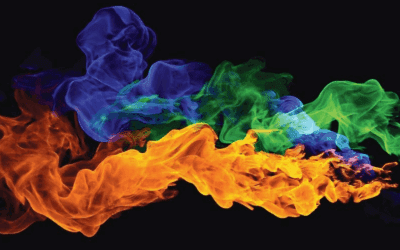
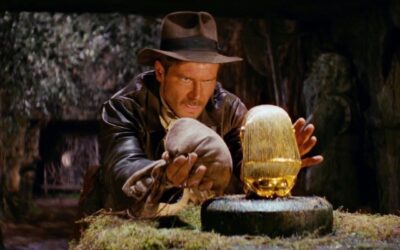
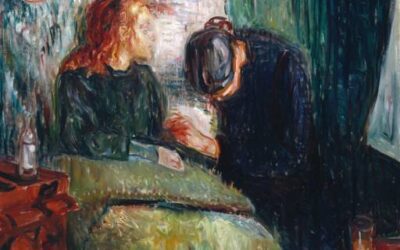
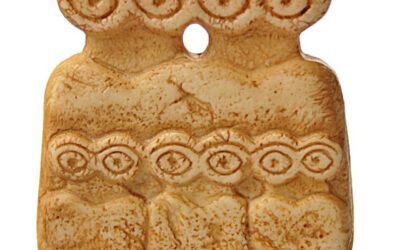

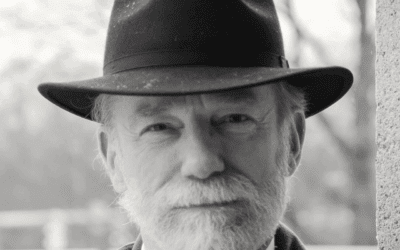
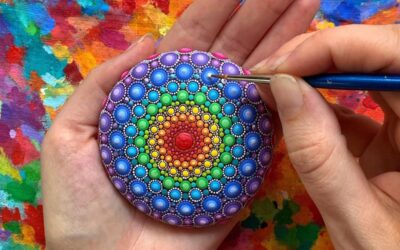
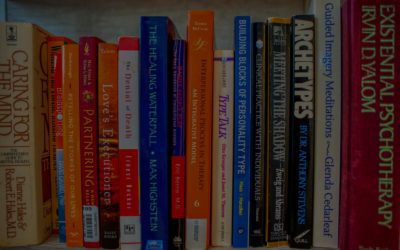


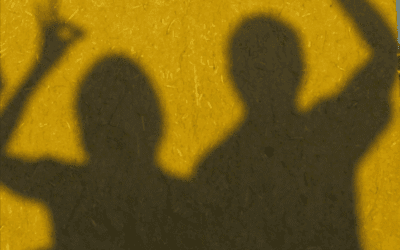


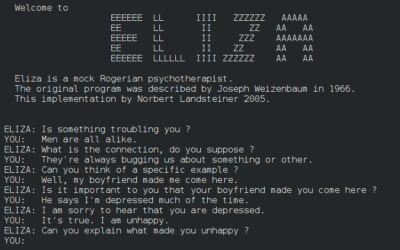
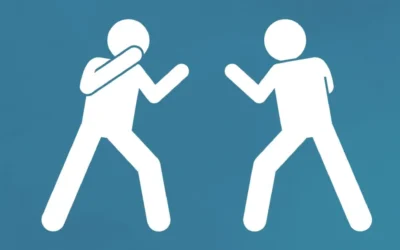
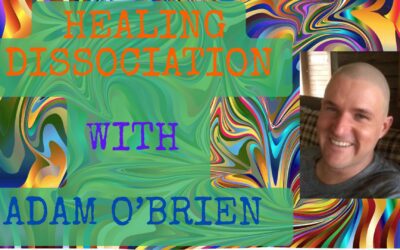
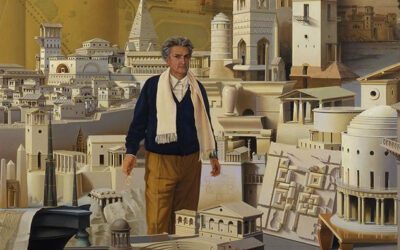
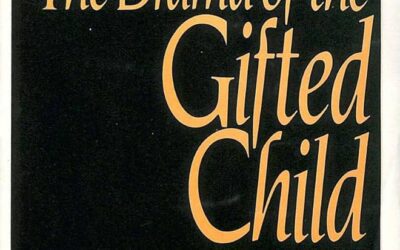
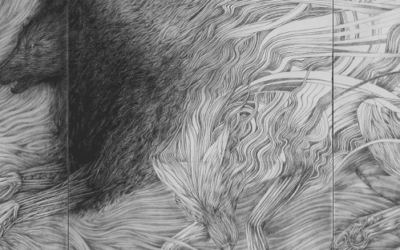
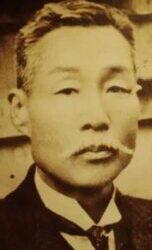
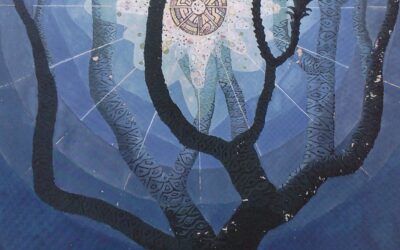
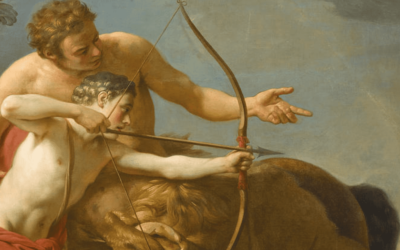
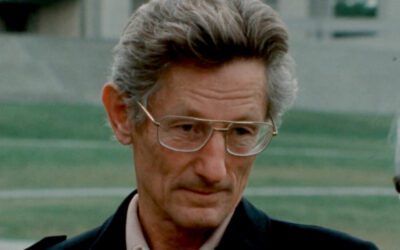

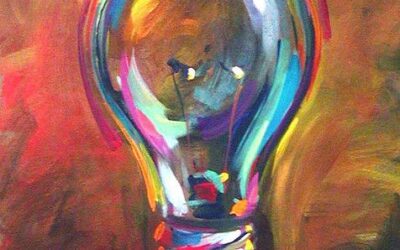
0 Comments